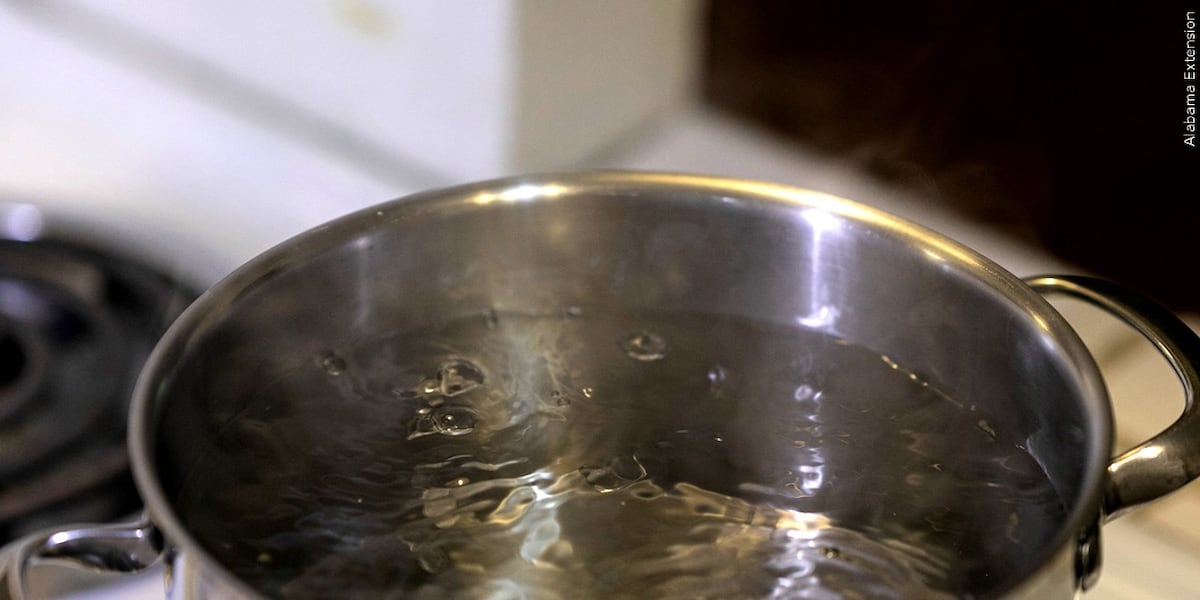Report on the Phased Upgrade of Albert Lea’s Wastewater Treatment Plant
Introduction: Aligning Infrastructure with Sustainable Development Goals
The City of Albert Lea is undertaking a strategic, phased upgrade of its wastewater treatment plant, originally constructed in 1981. This initiative directly addresses several United Nations Sustainable Development Goals (SDGs) by modernizing critical infrastructure to meet contemporary environmental standards and ensure long-term community resilience. The project is a direct response to the need for enhanced water quality and sanitation, reflecting a commitment to SDG 6 (Clean Water and Sanitation). By focusing on reducing pollutants like phosphorus, the city also contributes to SDG 14 (Life Below Water), protecting local aquatic ecosystems from the harmful effects of nutrient-driven algae growth. Furthermore, this investment in essential public services supports the development of SDG 11 (Sustainable Cities and Communities).
Project Rationale and Financial Strategy
The primary drivers for the upgrade are the plant’s aging infrastructure and the implementation of stricter pollution limits by regulatory bodies. A key focus is the reduction of phosphorus discharge, a critical measure for improving water quality in receiving water bodies.
The financial scope of the project has evolved, with initial cost estimates of $80 million rising to $100 million due to inflation. The city’s phased approach represents a pragmatic financial strategy, allowing for targeted applications for state and federal funding. This collaborative funding model, involving partnerships between municipal and state governments, is an example of SDG 17 (Partnerships for the Goals) in action. To date, the city has secured $2 million from the 2023 state bonding bill, and it stands to benefit from an increase in Minnesota’s grants for phosphorus reduction, which rose from $7 million to $12 million.
Phased Implementation Plan for SDG Achievement
The project is structured into four distinct phases, each designed to achieve specific operational and environmental objectives aligned with the SDGs.
-
Phase 1: Foundational Treatment Enhancement
- Action: Replacement of the grit building, which performs the initial step in the wastewater treatment process. This phase is currently under construction.
- Funding: Supported by $3 million in state and federal funds.
- SDG Alignment: This foundational work is essential for the overall effectiveness of the sanitation system, directly supporting SDG 6.
-
Phase 2: Advanced Phosphorus Removal
- Action: Installation of new equipment and infrastructure improvements specifically designed to remove a higher percentage of phosphorus from wastewater discharge.
- Funding: Estimated total cost of $25 million. The city plans to apply for a $12 million state grant.
- SDG Alignment: This phase is critical for achieving SDG 6.3 (improving water quality by reducing pollution) and SDG 14.1 (reducing pollution of marine and freshwater ecosystems).
-
Phase 3: Modernization and Disinfection
- Action: Further replacement of aging infrastructure and the addition of modern equipment, including a new ultraviolet (UV) disinfection system.
- Funding: Estimated total cost of $50 million. The city plans to apply for $25 million in state bonding.
- SDG Alignment: Upgrading to UV disinfection represents an investment in resilient and innovative infrastructure, aligning with SDG 9 (Industry, Innovation, and Infrastructure) while ensuring safer water discharge under SDG 6.
-
Phase 4: Sustainable Biosolids Management
- Action: Focus on improving the management and processing of biosolids (sewage sludge). This phase is deferred pending the acquisition of additional state funding.
- SDG Alignment: Enhancing biosolids management contributes to SDG 12 (Responsible Consumption and Production) by promoting the sustainable management of waste and potential for resource recovery.
1. Which SDGs are addressed or connected to the issues highlighted in the article?
SDG 6: Clean Water and Sanitation
- The entire article revolves around upgrading a wastewater treatment plant. This directly relates to SDG 6, which aims to ensure the availability and sustainable management of water and sanitation for all. The project’s goal is to treat wastewater more effectively to meet “stricter pollution limits.”
SDG 9: Industry, Innovation, and Infrastructure
- The project involves a significant infrastructure upgrade, replacing a plant built in 1981 with modern technology. The article details the need to “replace aging infrastructure” and add new equipment like “ultraviolet disinfection.” This aligns with SDG 9’s goal of building resilient infrastructure and fostering innovation.
SDG 11: Sustainable Cities and Communities
- The City of Albert Lea is taking proactive steps to manage its municipal waste (wastewater) and reduce its environmental impact. This initiative is a core component of making cities more sustainable, as outlined in SDG 11, by improving essential services and reducing pollution.
SDG 14: Life Below Water
- A primary driver for the plant upgrade is the need to meet a “stricter limit on phosphorus, which is a nutrient that grows algae.” Reducing nutrient pollution from land-based sources like wastewater discharge is critical to preventing eutrophication and protecting aquatic ecosystems, which is a key objective of SDG 14.
2. What specific targets under those SDGs can be identified based on the article’s content?
Target 6.3
- “By 2030, improve water quality by reducing pollution… halving the proportion of untreated wastewater…” The article’s focus on meeting stricter pollution limits and implementing advanced processes to “remove more phosphorus from its wastewater discharge” directly contributes to this target by improving the quality of treated wastewater released into the environment.
Target 9.1
- “Develop quality, reliable, sustainable and resilient infrastructure…” The project to replace an aging 1981 plant with a modern, phased system is a clear example of developing sustainable and resilient infrastructure. The upgrades, such as the new grit building and UV disinfection, enhance the reliability and quality of the city’s sanitation infrastructure.
Target 11.6
- “By 2030, reduce the adverse per capita environmental impact of cities, including by paying special attention to… municipal and other waste management.” The upgrade of the wastewater treatment plant is a direct action in municipal waste management aimed at reducing the city’s environmental pollution, specifically nutrient pollution.
Target 14.1
- “By 2025, prevent and significantly reduce marine pollution of all kinds, in particular from land-based activities, including… nutrient pollution.” The project’s explicit goal of reducing phosphorus, a key nutrient that causes harmful algal blooms in water bodies, directly addresses the reduction of nutrient pollution from a land-based source (the city’s wastewater).
3. Are there any indicators mentioned or implied in the article that can be used to measure progress towards the identified targets?
Indicator for Target 6.3
- The article implies a clear indicator: the concentration of phosphorus in the treated wastewater discharge. Progress is measured by the plant’s ability to meet the new “stricter limit on phosphorus.”
Indicator for Target 9.1
- Progress is indicated by the amount of funding secured and the completion of project phases. The article mentions specific financial figures ($2 million received, applying for $12 million and $25 million) and outlines a clear four-phase construction plan. The completion of each phase (e.g., the grit building in Phase 1) is a tangible measure of progress.
Indicator for Target 14.1
- The implied indicator is the total reduction of nutrient (phosphorus) load discharged into the receiving water body. This directly measures the success of the project in preventing nutrient pollution from this specific land-based activity.
4. Create a table with three columns titled ‘SDGs, Targets and Indicators” to present the findings from analyzing the article.
| SDGs | Targets | Indicators |
|---|---|---|
| SDG 6: Clean Water and Sanitation | Target 6.3: Improve water quality by reducing pollution and improving wastewater treatment. | Concentration of phosphorus in wastewater discharge meeting stricter limits. |
| SDG 9: Industry, Innovation, and Infrastructure | Target 9.1: Develop quality, reliable, sustainable and resilient infrastructure. | Completion of the four phases of the plant upgrade; amount of state and federal funding secured for the project. |
| SDG 11: Sustainable Cities and Communities | Target 11.6: Reduce the adverse per capita environmental impact of cities, focusing on municipal waste management. | Improved management of municipal wastewater through the upgraded plant. |
| SDG 14: Life Below Water | Target 14.1: Prevent and significantly reduce nutrient pollution from land-based activities. | Reduction in the total load of phosphorus discharged from the plant into water bodies. |
Source: kaaltv.com







